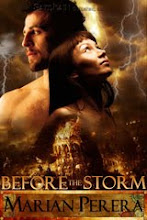I just realized that there’s one fantasy element which never shows up in my current stories. That’s the magical artifact.
Most of the role-playing gamebooks I’ve read (and loved) had magical artifacts. In fact, one of my favorite series,
Blood Sword, is even named after the Quest Object. There are thousands of fantasies out there with plots about finding some kind of powerful item which will tilt the scales in the protagonist’s favor. And that’s the first problem…
1. The story revolves around the artifact.If there’s more focus on the artifact (or the search for the artifact) than on the characters, this can make the fantasy come off as flat. It’s also easier to make readers care and worry over people than over Quest Objects. Swords are cool, but I’ll bet readers were more upset over what happened to Ned Stark than over what happened to Ice.
One reason I like Lawrence Watt-Evans’s
The Misenchanted Sword is because the story isn’t about a hero and Dark Lord both hunting down an ancient artifact… with the hero getting there first, of course (some day I’d love to read a story where the Dark Lord reaches and uses or destroys the artifact first). Instead, the story begins when a hermit undertakes the haphazard creation of a magical sword to help a protagonist pursued by enemies, and the sword is definitely
not the fantasy version of the AK-47 or the nuclear warhead.
The story is always about the protagonist trying to survive the war and build a future for himself in peacetime, not about the sword.
2. The artifact is too powerful.Some magical items are so +∞ to Everything Destruction that I wonder why the story doesn’t come to an end shortly after they’re found. Even objects that don’t directly destroy anything can be used to defeat the opposition speedily – orbs that see everything or see into the future, for instance, could always be used to keep track of an enemy’s movement or whereabouts.
One way to get around that is to make sure that “with great power comes greater peril”. Tolkien’s One Ring is a superb example, but unfortunately, a lot of artifacts in fantasy aren’t like this. Either they simply supply the great power, like medieval batteries. Or they’re evil unless they’re in the hands of the right person (i.e. the protagonist), at which point they’re batteries again.
Fred Saberhagen’s Twelve Swords of Power are immensely powerful weapons, but nearly all have disadvantages. One of them, the Sword of Despair, induces a state of deep and instant apathy and depression in an area the size of a battlefield around it when it’s drawn. This would be enough for one wielder to win a battle, right? Nope, because whoever draws the sword is subject to this effect as well, and can’t summon up the willpower required to sheath it afterwards.
3. The artifact exists for the sake of the storyWith the most realistic characters, I feel that they have lives and histories beyond the printed pages. I’m privileged to see some part of what they think and feel and do, but there’s much more about them that I’ll never know.
The best artifacts give me this impression as well. They weren’t just created for the purpose of being Quest Objects; they have a history that explains why there’s only one or a few of them. They may have personalities and memories as well. I’d love to see a crown which would reflect morosely on the far better rulers whom it had sat upon, or a sword which had its own, very decided ideas on who its wielder would fight.
4. There’s more than one artifact.Back in the late nineties, I started reading a series called
The Twelve Treasures, and yes, there were supposed to be twelve books in it, dealing with the recovery of the twelve magical objects. Except only three novels were ever published.
Most unpublished fantasy writers won’t be able to count on getting a long series in which to detail the search for multiple magical artifacts. Shoehorning them all into a single novel may not work either.
Harry Potter and the Deathly Hallows could do this not just because of its length but because there were six other books which also fleshed out Rowling’s world and characters.
5. There’s only one artifact.If a wizard is able to make one magic sword – and is rewarded for doing so – I wonder why he doesn’t make another. In
The Misenchanted Sword, the reason was clear: the hermit had such limited supplies that some of the spells he put on the sword were makeshift. There was no way he could create another such sword, and no reason for him to try.
But under other circumstances, why doesn’t the wizard carry out more enchantments? This is what I find sad about magical objects, by the way. They’re too often big flashy portentous MAGICAL ARTIFACTS, so the subtlety and charm of the smaller things is lost. Imagine a
Lord of the Rings with just the Rings. No Sting glowing to warn of orcs nearby, no phial lighting up in Shelob’s lair.
Why not have more of the smaller items? Wind chimes that ring out to announce a visitor’s presence, blank slates on which maps of the immediate surroundings appear… anything is possible. One thing I enjoyed about
Harry Potter and the Sorcerer's Stone was the sheer scope of magic, how it was everywhere and influenced nearly everything in the wizarding world. That was partly because Rowling didn’t save magic for the large, grand objects; she let wizards use it as humans would use technology.
And it was a great read.


























